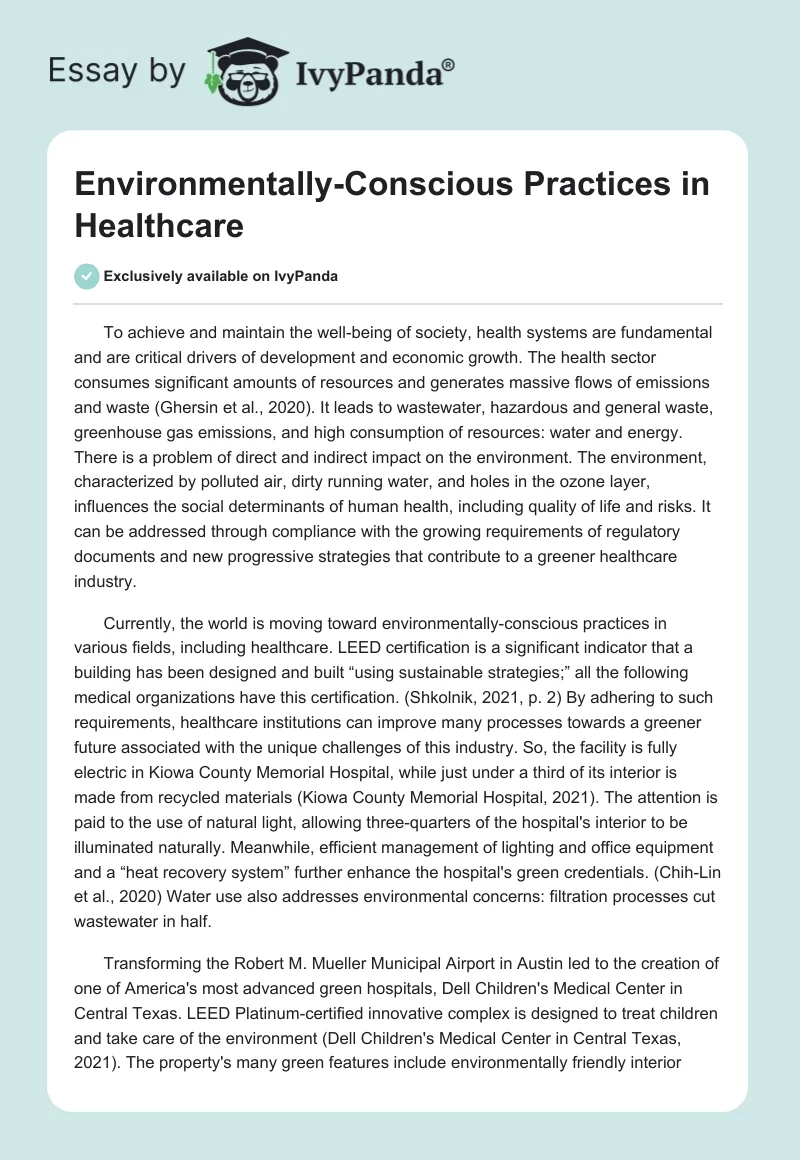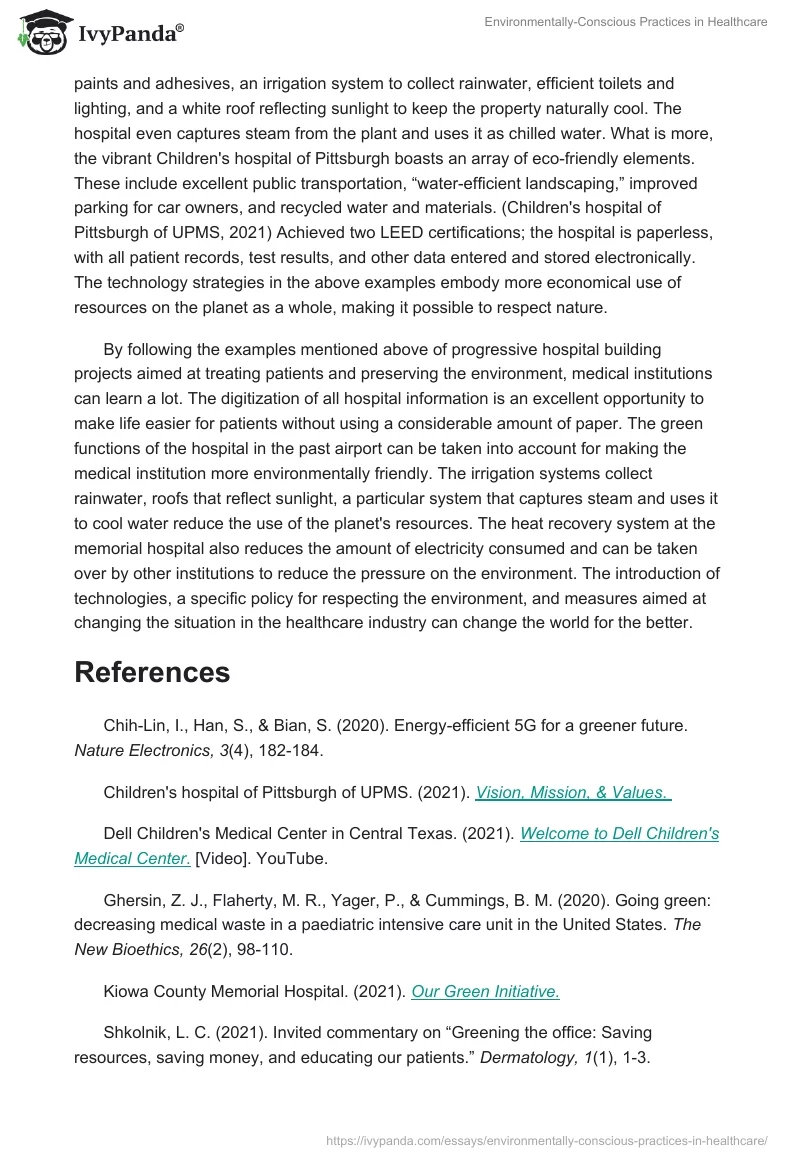To achieve and maintain the well-being of society, health systems are fundamental and are critical drivers of development and economic growth. The health sector consumes significant amounts of resources and generates massive flows of emissions and waste (Ghersin et al., 2020). It leads to wastewater, hazardous and general waste, greenhouse gas emissions, and high consumption of resources: water and energy. There is a problem of direct and indirect impact on the environment. The environment, characterized by polluted air, dirty running water, and holes in the ozone layer, influences the social determinants of human health, including quality of life and risks. It can be addressed through compliance with the growing requirements of regulatory documents and new progressive strategies that contribute to a greener healthcare industry.
Currently, the world is moving toward environmentally-conscious practices in various fields, including healthcare. LEED certification is a significant indicator that a building has been designed and built “using sustainable strategies;” all the following medical organizations have this certification. (Shkolnik, 2021, p. 2) By adhering to such requirements, healthcare institutions can improve many processes towards a greener future associated with the unique challenges of this industry. So, the facility is fully electric in Kiowa County Memorial Hospital, while just under a third of its interior is made from recycled materials (Kiowa County Memorial Hospital, 2021). The attention is paid to the use of natural light, allowing three-quarters of the hospital’s interior to be illuminated naturally. Meanwhile, efficient management of lighting and office equipment and a “heat recovery system” further enhance the hospital’s green credentials. (Chih-Lin et al., 2020) Water use also addresses environmental concerns: filtration processes cut wastewater in half.
Transforming the Robert M. Mueller Municipal Airport in Austin led to the creation of one of America’s most advanced green hospitals, Dell Children’s Medical Center in Central Texas. LEED Platinum-certified innovative complex is designed to treat children and take care of the environment (Dell Children’s Medical Center in Central Texas, 2021). The property’s many green features include environmentally friendly interior paints and adhesives, an irrigation system to collect rainwater, efficient toilets and lighting, and a white roof reflecting sunlight to keep the property naturally cool. The hospital even captures steam from the plant and uses it as chilled water. What is more, the vibrant Children’s hospital of Pittsburgh boasts an array of eco-friendly elements. These include excellent public transportation, “water-efficient landscaping,” improved parking for car owners, and recycled water and materials. (Children’s hospital of Pittsburgh of UPMS, 2021) Achieved two LEED certifications; the hospital is paperless, with all patient records, test results, and other data entered and stored electronically. The technology strategies in the above examples embody more economical use of resources on the planet as a whole, making it possible to respect nature.
By following the examples mentioned above of progressive hospital building projects aimed at treating patients and preserving the environment, medical institutions can learn a lot. The digitization of all hospital information is an excellent opportunity to make life easier for patients without using a considerable amount of paper. The green functions of the hospital in the past airport can be taken into account for making the medical institution more environmentally friendly. The irrigation systems collect rainwater, roofs that reflect sunlight, a particular system that captures steam and uses it to cool water reduce the use of the planet’s resources. The heat recovery system at the memorial hospital also reduces the amount of electricity consumed and can be taken over by other institutions to reduce the pressure on the environment. The introduction of technologies, a specific policy for respecting the environment, and measures aimed at changing the situation in the healthcare industry can change the world for the better.
References
Chih-Lin, I., Han, S., & Bian, S. (2020). Energy-efficient 5G for a greener future. Nature Electronics, 3(4), 182-184.
Children’s hospital of Pittsburgh of UPMS. (2021). Vision, Mission, & Values.
Dell Children’s Medical Center in Central Texas. (2021). Welcome to Dell Children’s Medical Center. [Video]. YouTube.
Ghersin, Z. J., Flaherty, M. R., Yager, P., & Cummings, B. M. (2020). Going green: decreasing medical waste in a paediatric intensive care unit in the United States. The New Bioethics, 26(2), 98-110.
Kiowa County Memorial Hospital. (2021).Our Green Initiative.
Shkolnik, L. C. (2021). Invited commentary on “Greening the office: Saving resources, saving money, and educating our patients.” Dermatology, 1(1), 1-3.


